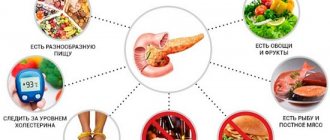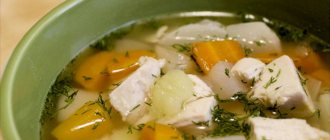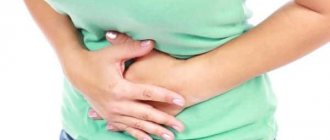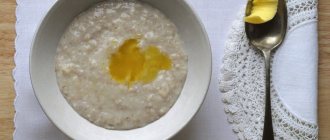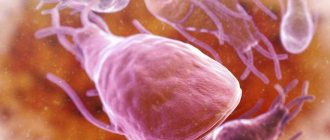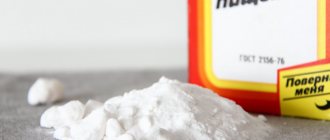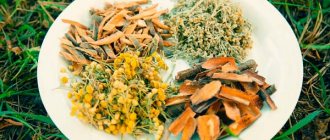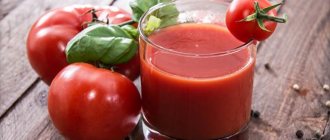Pancreatitis is an inflammation of the pancreas that can occur in acute or chronic form. The disease is accompanied by a violation of the outflow of secretions from the organ, as a result of which enzymes begin to destroy gland cells, and the digestion of food in the intestines practically stops. To stop this process, experts treat pancreatitis with medications with various properties: to eliminate symptoms, neutralize enzymes in the gland or replenish their deficiency in the intestines. Particular attention is paid to lifestyle and diet.
Rice. 1
Not only the result of therapy, but also a person’s life depends on how correct the choice of medications is. Incorrectly selected drugs for pancreatitis can nullify the efforts of doctors to save the patient’s life. As a result of improper treatment, necrosis of the pancreas and diabetes mellitus may develop. There are often cases when an abscess forms in an organ, the rupture of which leads to peritonitis, the formation of fistulas between the pancreas and nearby organs. All these diseases are dangerous with a high risk of death or a significant deterioration in the patient’s quality of life.
What is pancreatitis?
Pancreatitis is an inflammation of the pancreas; it can be very severe and even life-threatening.
The pancreas secretes enzymes that are necessary for the digestion and absorption of food by the intestines. It also produces important hormones (insulin, somatostatin and glucagon) and protects the duodenum from acid that comes from the stomach.
Why does pancreatitis occur?
Malfunction of the gland is provoked by:
- alcoholism,
- cholelithiasis,
- excess intake of fatty foods,
- some medications, etc.
Often the cause is narrowed or blocked ducts of the gland. As a result, enzymes secreted by the pancreas accumulate in it and begin to destroy it itself. The gland becomes inflamed (Fig. 1).
Then, instead of going to the duodenum, these enzymes enter the blood, poisoning the body. Read more about the development of the disease in the article “Pancreatitis”
Figure 1. Development of pancreatitis. Source: health.harvard.edu
Pancreatitis can occur in two forms: acute and chronic. In acute cases, unexpected inflammation of the pancreas occurs. It can lead to the death of an organ or its parts and its replacement with connective tissue and fat. In the best case, acute pancreatitis goes away on its own: there is no need for hospitalization. At worst, it becomes chronic. With it, the structure of the organ changes: the ducts become clogged, the gland tissue becomes covered with scars.
There are known cases of recurrent pancreatitis. Its features are acute pain, but against the background of a changed structure of the pancreas.
Methods for diagnosing pancreatitis
For most patients, the reason for going to the clinic is regular abdominal pain, loss of appetite, heaviness in the stomach and other obvious signs of pathology. Chronic inflammation can be discovered accidentally during medical examination. Methods for diagnosing pancreatitis:
- Blood chemistry. Classic signs of health problems: high ESR, leukocytosis. With pancreatitis, the levels of trypsin, amylase and lipase increase.
- Examination of urine and feces samples. They show an increase in amylase and changes in the levels of other enzymes. The coprogram shows the presence of undigested food residues.
- Ultrasound of the abdominal organs. An informative method that determines changes in the size and structure of the pancreas, concomitant inflammation of nearby bile ducts and liver.
- MRI. Prescribed for the differential diagnosis of pancreatitis in complex or controversial cases, with a severe course of the process.
Symptoms of chronic and acute pancreatitis
Symptoms usually appear after excessive consumption of alcohol and fatty foods. Pancreatitis is characterized by:
- constant severe pain in the left hypochondrium or girdle pain in the epigastrium (upper abdomen),
- repeated vomiting,
- swelling in the upper abdomen,
- cardiopalmus,
- low blood pressure,
- change in stool (at the beginning of the disease, stool is normal, then diarrhea occurs, fatty spots are present in the stool, the smell is sharp and unpleasant),
- weight loss, lack of appetite (in chronic form).
In the chronic form, the pain may be dull and aching in the middle of the abdomen. If recurrent pancreatitis occurs, the acute pain returns. Over time, the pain is replaced by a lack of enzymes, which leads to bloating after eating. The chronic form may be accompanied by decreased appetite and loss of the small intestine's ability to absorb nutrients (malabsorption). A lot of fat comes out with feces; it has an unpleasant odor, is lighter than normal and has greasy stains. This form is also fraught with the formation of false cysts in the gland, which increase the risk of pancreatic cancer.
Therapy with Trasylol
Trasylol is a medicine for the treatment of chronic pancreatitis.
Trasylol belongs to the category of drugs of animal origin, which are widely used during the treatment of patients in hospital settings.
Traditional medicine inactivates enzymes in the pancreas - trypsin and kallikretin.
If a patient is diagnosed with acute or chronic pancreatitis, then he is prescribed this pharmaceutical medicine.
Treatment Basics
The approach to treating pancreatitis varies depending on the form of the disease. In acute severe form of pancreatitis, when there is pain and constant vomiting, the patient is hospitalized. In case of a chronic disease and in the absence of relapses, hospitalization is not required; doctors fight the cause of the disease with the help of drugs.
Acute pancreatitis on a CT image. Photo: Hellerhoff / (Creative Commons Attribution-Share Alike 3.0 Unported license)
After admission to the hospital with acute pancreatitis, the patient is not fed, as a rule, for the first 48 hours. A tube is inserted into the stomach to remove its contents. If there are complications (bleeding, acute intestinal obstruction, suppuration, etc.), the patient is referred for surgery.
Next, the doctor prescribes various medications to reduce the load on the gland, reduce pain and prevent the development of infection.
With pancreatitis, control of the production of pancreatic digestive enzymes is vital. Lack of oral nutrition in the first week after the attack is over is the most effective way of such control. Therefore, parenteral nutrition is used, that is, intravenous infusion through a dropper, or enteral nutrition, in which nutritional mixtures are administered through a tube.
Pancreatitis can occur with a complication in the form of death of part of the pancreas or the entire organ (pancreatic necrosis). In this case, doctors adhere to a conservative method of treatment with the help of medications. In case of infected pancreatic necrosis, the use of antibiotics is mandatory. If conservative treatment does not help and the patient progresses to multiple organ failure, suppuration, pancreatic necrosis or pancreatic cancer, surgery is prescribed.
At the first stage, doctors prefer to minimize surgical intervention in the body. First, puncture and drainage of the pancreas and retroperitoneum are performed. To do this, using small incisions, special tubes (drains) are inserted inside, which remove excess liquid and wash the cavity with special solutions.
In case of a more severe condition of the patient and widespread damage to the gland, they resort to alternative treatment tactics, which include:
- laparotomy, that is, external drainage, in which incisions are made in the abdominal wall,
- resection of the gland or removal of it entirely.
Removing the gland is an extreme measure; it is resorted to in a situation where the organ can no longer be restored. It is possible to live without a gland, but you will have to artificially maintain its functions: take insulin, enzyme preparations and follow a very strict diet.
How to cope with an attack of pancreatitis?
The main task when severe pain occurs is to provide the gland with cold, hunger and peace. You should not eat anything and consult a doctor immediately. To relieve inflammation, you need to put a cold compress on your stomach.
Unconventional treatment
During the acute stage, treating pancreatitis with non-traditional methods is inappropriate due to their ineffectiveness. However, in the remission phase, they help reduce the intensity of the inflammatory process, thereby reducing the duration and frequency of exacerbations.
You should immediately take into account that folk remedies will have to be taken for a long time and on an ongoing basis. Medicinal herbs are used as a basis:
- pharmaceutical camomile:
- immortelle;
- thyme;
- yarrow;
- plantain;
- celandine.
Infusions and decoctions are made from herbs, which are taken orally instead of tea throughout the day. The following folk remedies will also be effective:
- drinking potato juice in its pure form (50 ml per day);
- preparing medicinal porridge: pour raw buckwheat with kefir, leave to infuse overnight, take in the morning instead of breakfast;
- use of oatmeal jelly: soak the flakes in water for half an hour, add water and boil for an hour until a thick consistency is obtained.
Despite the fact that alternative medicine products have a natural composition and do not contain synthetic components, even these can cause harm to the body if used incorrectly.
In addition to being accompanied by severe symptoms, attacks of pancreatitis can be complicated by negative consequences. Therefore, it is not enough to take painkillers. Treatment of the disease must be comprehensive.
Drug treatment of pancreatitis in adults
Medicines play an important role in the treatment of pancreatitis. They carry several functions at once:
- restoration of enzyme deficiency,
- restoration of hormonal levels,
- improvement of metabolic processes,
- fight inflammation
- preventing spasms,
- normalization of blood circulation,
- pain relief,
- compensation of water-electrolyte losses and plasma losses.
The range of prescribed medications can be large; it is important to strictly follow the doctor’s instructions and take all necessary medications on time.
6 tips to help you remember to take your medications
Many drugs for pancreatitis need to be taken regularly, without missing the next dose. To quickly adapt to life during illness, follow these simple tips:
- It is important to take digestive enzymes and some other medications before meals. At first, it is useful to say to yourself: “First medicine, then food.” The idea is to make taking your medications as routine as washing your hands and using a tissue.
- Use a medication organizer. The cells in it can be associated with the time of day or the next meal; some organizers are equipped with a timer and can sound a sound signal. At the end of the month, using the pill box, it is easy to track whether all medications were taken on time (Fig. 2).
- Keep the tablets in a visible place. Don't forget to put them in your bag when you leave home. If you use a lunch box, place your pills in or next to it.
- Tell your friends and family about your illness. Someone close to you can tell you to take your medicine on time if you forget about it.
- Listen to yourself. Renewal of symptoms may clearly indicate missed medications.
- Some medications are better taken twice than not taken at all. Consult with your doctor which of your tablets can be taken in double doses without harm to your health, so you will not be afraid to take the tablet again if you do not remember when you took the medicine.
Figure 2. Medicine organizer. Source: freepik.com
Features of prescribing drugs for pancreatitis in women
Acute pancreatitis in pregnant women is a rare occurrence. Research suggests only three cases out of 10,000. However, as pregnancy progresses, the risk of developing the disease increases. Therefore, the treatment of such patients should be approached very carefully.
There is no agreement among doctors regarding the use of antibiotics during pregnancy. When choosing a medication, the doctor takes into account the severity of the disease, associated complications, and gestational age. In some cases, a positive outcome for the mother is the decisive factor in prescribing antibiotic therapy, even despite the risks of impaired fetal development. In the absence of infection in the bile ducts, as a rule, antibiotics are not prescribed.
Mild forms of pancreatitis may go away on their own. The doctor prescribes antihyperlipidemic drugs, insulin, heparin and diet. In severe cases, the question of termination of pregnancy comes up. The decision depends on many factors and is made by the doctor in each individual case.
Venous parenteral nutrition catheters may cause pregnancy complications. Enteral feeding is preferred, using a tube that passes through the nose and esophagus into the intestines.
Drug treatment of pancreatitis in children
Doctors agree that pancreatitis in children is difficult to diagnose. The reasons for its appearance differ from cases with adults, but the disease itself is more treatable.
Most often, pancreatitis in children occurs against the background of other diseases. Thus, the causes may be inflammation of other organs: the stomach and duodenum (gastroduodenitis), gall bladder (cholecystitis), intestines (enterocolitis), or peptic ulcer. Other causes include the use of certain medications, anatomical features of the gastrointestinal tract, and abdominal trauma.
Treatment is aimed at eliminating the cause of the disease and preventing dangerous consequences. Children are prescribed the same medications as adults. The dosage of each medication is determined by the doctor.
Diet is the basis of treatment of childhood pancreatitis. Overeating or poor nutrition (excessive amounts of canned and fatty foods) can trigger inflammation. It is important to follow fractional meals in small portions, limit the amount of fat, sugar and salt, and absolutely exclude fried and pickled foods, sweet carbonated water, chocolate and ice cream from the diet. For more information about nutrition for pancreatitis, read the article “Diet for pancreatitis.”
Nutrition in the acute phase
In addition to knowing how to relieve an attack of pancreatitis at home, you need to learn some nutritional rules. By following a certain diet, you can smooth out the clinical manifestations of acute pancreatitis and reduce the frequency and duration of exacerbation phases.
Principles of proper nutrition during illness:
- exclusion of foods containing fats, carbohydrates (especially sugar and foods containing it);
- increasing the volume of products with lean proteins;
- exclusion of fried, fatty, coarse fiber;
- maintaining fractional meals (small portions, but often throughout the day).
For pancreatitis, it is important to consume many vitamins and beneficial micro- and macroelements, and since it is difficult to get them all from food, doctors recommend taking synthetic drugs.
In the acute stage of pancreatitis, foods (except those prohibited) must be crushed before consumption, boiled or steamed. Frying is prohibited.
Diet in the first and subsequent days
During the first two days of exacerbation of the disease, a person is prohibited from eating. It is only permissible to drink mineral water (not carbonated). This helps to suppress the secretion of pancreatic juice, reduce the intensity of pain, and remove toxic substances and breakdown products from the body. Mineral water can be replaced with rosehip decoction.
On the third day, the diet can be diversified by including ground food. The following foods should not be included in the diet:
- salt-containing;
- fats and carbohydrates;
- coarse fiber;
- hot seasonings, smoked meats, spices;
- marinades, onions, garlic;
- baking;
- alcohol.
After reducing the intensity of inflammatory manifestations, you can eat puree soup, lean meats, fish, cottage cheese, cereals and vegetables (in addition to cabbage, which increases gas formation). You can drink fruit and vegetable juice, fermented milk products (yogurt, kefir, etc.).
How long the diet will last depends on the characteristics of the development of the disease. The average duration is 6-12 months.
Drugs
The main task in the treatment of pancreatitis is to get rid of the cause that caused the inflammation and prevent the onset of complications. Therefore, doctors prescribe a whole course of tablets that should help the digestive system cope with the malfunction (Fig. 3).
Figure 3. To treat pancreatitis, medications of different directions of action are used. Source: MedPortal
Antispasmodics for pancreatitis
Antispasmodics are prescribed to relieve pain and muscle spasms. They can be administered intramuscularly or intravenously. The main ones include those containing drotaverine, mebeverine, pinaverium bromide, m-anticholinergics (metocinium iodide, atropine).
Enzymes and antienzyme drugs for pancreatitis
With pancreatitis, the gland is unable to produce enzymes necessary for digestion. Therefore, the patient must receive them from outside. In addition, the introduction of enzymes allows the gland to reduce their production and rest. Enzymes are prescribed only in the absence of exacerbation. They are divided into those that contain pancreatin (with and without bile components), and those that contain only components of plant origin (simethicone, chymopapain).
In acute pancreatitis, intoxication of the body occurs. Enzymes accumulate in the pancreas and, instead of going further to the duodenum, enter the blood. Anti-enzyme drugs are used to cleanse the body and relieve stress on the pancreas. They are drunk in the first 5 days from the onset of the disease. The main active ingredient of such drugs is aprotinin.
Important! Enzyme preparations must be taken with every meal. The enzyme preparation, its dosage and duration of treatment are determined only by the doctor. Under no circumstances should you take enzymes for acute pain. Such pain indicates worsening inflammation in the pancreas. Taking enzymes in this case will lead to increased intraductal pressure, which in the future will lead to blockage of blood vessels and necrosis.
Antacids
Hydrochloric acid, which is contained in gastric juice, triggers the work of the pancreas. The more of this acid, the more actively the iron works. With pancreatitis, increased activity of the organ leads to pain and complications. Antacids are used to reduce acidity in the stomach. They contain algeldate and magnesium hydroxide, which neutralize stomach acid. Doctors give preference to drugs in liquid form.
Antisecretory
Antisecretory drugs reduce the production of hydrochloric acid, which is contained in gastric juice. Its excessive amount leads to the fact that the alkaline pancreatic secretion is not able to neutralize the acidity of the environment. It is the alkaline environment that provides the best conditions for digestion, so its restoration is one of the tasks in the fight against pancreatitis. Another function of such drugs is to have a cytoprotective effect. They increase the secretion of protective mucus, increase blood flow to the digestive system and promote scar healing.
H2 blockers
These are antihistamine antisecretory agents. Their action is aimed at preventing the excitation of H2 receptors, which stimulate the work of all glands: salivary, gastric, pancreas. They reduce the acidity of gastric juice, delay the production of hydrochloric acid and pepsin, which breaks down protein. These include drugs containing famotidine, ranitidine, etc.
Proton pump inhibitors
Medicines whose purpose is to block the work of the proton pump located in the gastric mucosa and thereby reduce the acidity of the stomach by reducing the production of hydrochloric acid. The same acid that is necessary for digestion, but in large quantities leads to gastritis, and then to ulcers. Such drugs are benzimidazole derivatives. This includes drugs containing omeprazole, pantoprazole, lansoprazole, etc.
The drug Creon® 25000 for chronic pancreatitis
Find out more
Decreased pancreatic function inevitably leads to a lack of digestive enzymes in the body, so-called enzyme deficiency. As a result, the quality of digestion suffers, and the body does not receive the necessary energy and nutrients for full functioning. Creon® is designed specifically to compensate for the lack of its own enzymes through their delivery from the outside and belongs to the group of enzyme preparations. The drug contains enzymes identical to those produced by the pancreas. The key feature is that the active ingredient Creon® is small particles - minimicrospheres, which are collected in a capsule. The fact is that science has been studying enzyme preparations for more than 100 years in order to increase their effectiveness. To date, scientific advances indicate that preparations with particles whose size does not exceed 2 mm4.5 can most accurately recreate the natural process of digestion. Moreover, it has been scientifically proven that the smaller the particles of the drug, the more effective it can be4,6.
Creon® is the only drug whose capsule contains hundreds of small particles - minimicrospheres7. Their size does not exceed 2 mm, which is recorded as recommended in world and Russian scientific works4,5,6.
Other medications for pancreatitis
Depending on the form and phase of the disease in each individual case, based on symptoms and test results, the doctor prescribes additional medications.
Antibiotics
To combat inflammation and pus, as well as to prevent serious consequences in the form of necrosis, sepsis and abscess, antibiotics and antimicrobial agents are needed. The duration of the course usually does not exceed 7–14 days. Carbapenems, cephalosporins, fluoroquinolones, and metronidazole are usually used. In the hospital, such drugs are administered parenterally (intramuscularly or intravenously).
Vitamins
Digestive insufficiency is usually accompanied by a lack of vitamins. Before prescribing vitamin preparations, doctors always send for analysis to find out which vitamins are missing. As a rule, fat-soluble vitamins A, D, E and K are prescribed, since they are responsible for the metabolism of proteins, fats and carbohydrates. They also help enzymes function and protect against pancreatic cancer.
Anti-inflammatory drugs for pancreatitis
In addition to antibiotics, doctors prescribe non-steroidal anti-inflammatory drugs and analgesics. In particular, non-narcotic analgesics (diclofenac, piroxicam, meloxicam, metamizole sodium, etc.). They relieve inflammation and pain.
Is it possible to take choleretic drugs?
Gallstone disease is one of the main causes of pancreatitis. Therefore, choleretic substances, which help prevent stagnation of bile and reduce the load on the pancreas, are on the list of drugs to combat this disease. It must be borne in mind that in acute pancreatitis and exacerbation of the chronic form, choleretic drugs are contraindicated. They are taken only during the period of remission.
Iron supplements
The use of iron supplements in the treatment of pancreatitis is not common practice. In some cases, taking enzyme preparations can lead to a deterioration in the absorption of iron and, consequently, its deficiency in the body. According to other data, the consumption of iron supplements by patients after acute pancreatitis affected carbohydrate metabolism.
Preparations for restoring intestinal microflora
In addition to the basic treatment complex, bifidobacteria and lactobacilli are prescribed. They are designed to restore microflora especially after taking antibiotics. Such drugs are the prevention of dysbiosis, in which the microbial composition of the intestine is disrupted.
What drops are falling
Infusion solutions are prescribed in the form of droppers. This therapy is aimed at maintaining water and electrolyte composition. This includes colloidal and crystalline solutions. They replenish lost energy, protein and plasma.
Plasmapheresis
Plasmapheresis is used to cleanse the body of toxins. During this procedure, blood is taken, the patient's plasma, which contains toxins, is filtered, and donor plasma is returned.
Modern possibilities for the treatment of chronic pancreatitis
Chronic pancreatitis is a long-term inflammatory disease of the pancreas, manifested by irreversible morphological changes that cause pain and/or persistent decrease in pancreatic function. In chronic pancreatitis, morphological changes in the pancreas persist after the cessation of exposure to the etiological agent. Currently, the prevalence of chronic pancreatitis, according to autopsy data, ranges from 0.01 to 5.4%, on average - 0.3-0.4%, while over the past 40 years the incidence has approximately doubled, which is associated with the fact that the population began to consume more alcoholic beverages, as well as exposure to harmful environmental factors (see diagram 1).
| Diagram 1. Incidence of CP in 1945-1985. (Worning H., 1990) |
Several factors play an important role in the pathogenesis of chronic pancreatitis. One of the main ones is obstruction of the main pancreatic duct due to stones, inflammatory stenosis or tumors. In alcoholic pancreatitis, damage to the pancreas is associated with increased protein levels
in the pancreatic secretion, which leads to the appearance of protein plugs and obstruction of the small ducts of the gland. Another factor influencing the pathogenesis of alcoholic pancreatitis is a change in the tone of the sphincter of Oddi: its spasm causes intraductal hypertension, and relaxation promotes reflux of duodenal contents and intraductal activation of pancreatic enzymes.
Destruction of the exocrine part of the pancreas causes a progressive decrease in the secretion of bicarbonates and enzymes, however, clinical manifestations of impaired digestion of food develop only with the destruction of more than 90% of the parenchyma of the organ. First of all, manifestations of lipase deficiency occur in the form of impaired absorption of fats and fat-soluble vitamins: A, D, E and K, which is rarely manifested by bone damage and blood clotting disorders. Diabetes mellitus develops in 10–30% of patients with chronic pancreatitis, usually in the later stages of the disease; impaired glucose tolerance is observed much more often. Such patients are characterized by the development of hypoglycemic reactions to insulin, malnutrition or alcohol abuse. Ketoacidosis rarely develops, which is associated with a simultaneous decrease in the production of insulin and glucagon.
An attack of chronic pancreatitis is manifested by pain radiating to the back in the upper abdomen, developing after eating, which can last for many hours or several days. Nausea and vomiting are often observed, in 30–52% of patients there is weight loss, and in 16–33% there is jaundice. Transient jaundice occurs due to swelling of the gland during exacerbations of chronic pancreatitis, permanent jaundice is associated with obstruction of the common bile duct due to fibrosis of the head of the pancreas. When the pancreatic ducts rupture, secretion accumulates at the site of previous tissue necrosis, which leads to the formation of pseudocysts. Cysts may be asymptomatic or cause pain in the upper abdomen. With a long course of the disease, when the volume of functioning parenchyma decreases to 10% of the norm, signs of malabsorption appear (polyfeces, fatty stools, weight loss).
During chronic pancreatitis, several stages can be distinguished (Lankisch PG, Moessner Y.), the ability to distinguish which is important for the correct selection of therapy. Thus, at the first stage of the disease, there are no clinical symptoms: during this period, changes in CT or ERCP data characteristic of CP are detected only during a random examination.
At the second stage, initial manifestations occur, characterized by frequent episodes of exacerbation of CP (which can be mistakenly regarded as acute pancreatitis). The disease varies from repeated attacks of abdominal pain to constant moderate pain and weight loss. Over time, relapses become less severe, but symptoms persist between attacks. At this stage, the quality of life may deteriorate significantly. The second stage usually lasts for four to seven years. Sometimes the disease progresses rapidly, pancreatic atrophy develops, and organ function is impaired.
In patients at the third stage, symptoms of CP are constantly present, primarily abdominal pain. Patients may become dependent on analgesics and significantly reduce the amount of food they eat for fear of increased pain. Signs of exocrine and endocrine pancreatic insufficiency appear.
A feature of pancreatitis at the fourth stage is pancreatic atrophy, the development of exocrine and endocrine insufficiency, which is manifested by steatorrhea, weight loss and diabetes mellitus. The intensity of pain decreases, acute attacks of the disease stop, and severe systemic complications of CP and pancreatic adenocarcinoma can develop.
Therapy for pancreatitis is carried out in several areas: avoidance of alcohol consumption; following a low-fat diet (up to 50–75 g/day) and frequent small amounts of food; pain relief; enzyme replacement therapy, combating vitamin deficiency; treatment of endocrine disorders.
Treatment of an attack of chronic pancreatitis, as well as acute pancreatitis, is carried out according to a similar scheme. Mandatory components of therapy: intravenous administration of solutions of electrolytes and colloids, a fasting diet (complete fasting for up to two days) and analgesia (for example, meperidine). Administration of fresh frozen plasma or albumin is recommended. Diuretics are not indicated for most patients: oliguria resolves when hypovolemia disappears and renal perfusion normalizes. Aspiration of gastric contents through a nasogastric tube can be used to relieve vomiting, relieve gastrointestinal paresis, and reduce pancreatic stimulation. Coagulopathy that occurs with pancreatitis usually requires the use of heparin and fresh plasma. In recent years, the effectiveness of the platelet-activating factor antagonist Lexipafant (60–100 mg/day) has been shown in acute pancreatitis, but its effect in chronic pancreatitis still needs to be clarified.
The use of proteolytic enzyme inhibitors (eg, aprotinin, gabexate) is controversial. Studies show that there is no deficiency of protease inhibitors in acute pancreatitis, and clinical trials have not shown any benefit of these drugs compared to placebo. However, there is evidence that gabexate, a small molecule trypsin inhibitor, is effectively used to prevent the development of acute pancreatitis associated with ERCP.
Inhibitors of pancreatic secretion: glucagon, somatostatin, calcitonin, carbonic anhydrase inhibitors, vasopressin, isoprenaline, have also been proposed for the treatment of acute pancreatitis, but their effectiveness has not yet been sufficiently confirmed. Digestive enzyme preparations can be used for treatment both at the height of the disease to suppress pancreatic secretion, and during the recovery period, when the patient is again able to take food orally.
In case of biliary obstructive pancreatitis, timely endoscopic decompression of the biliary tract should be performed. Papillosphincterotomy, dilatation or stenting of the pancreatic duct is performed. Surgical treatment of obstructive pancreatitis is, of course, the main method, but at the same time, the advisability of performing intervention in the first day after the development of a severe attack should be considered controversial. After the severity of inflammation subsides, cholecystectomy is advisable.
The long-term therapy regimen for chronic pancreatitis can be divided into two main parts, in accordance with the leading clinical syndromes (see Diagram 2).
Relieving chronic pain syndrome in patients with pancreatitis is an extremely difficult task. First of all, you need to be sure that the patient does not have complications that can be corrected surgically (such as pseudocysts, intraductal obstruction or compression of neighboring organs). Nutrition is of some importance in reducing the severity of pain - therapy with vitamins and calcium supplements is required when maldigestion develops. Stopping alcohol intake is of fundamental importance, which significantly increases the survival rate of patients with severe pancreatitis. Analgesics are indicated: paracetamol or non-steroidal anti-inflammatory drugs, tramadol. Modern studies have revealed that for chronic pancreatitis, only high doses of analgesic drugs are effective: for example, tramadol must be prescribed at a dose of 800 mg/day or higher, which is twice the maximum dose. In Western countries, gastroenterologists often use narcotic drugs, which creates the problem of addiction in 10-30% of patients. Of great importance is the simultaneous administration of auxiliary drugs, such as antidepressants, which can have a direct analgesic effect, help relieve concomitant depression, and also potentiate the effect of analgesics. Antispasmodics and anticholinergic blockers normalize the outflow of bile and pancreatic juice (which reduces intrapancreatic pressure) and are a necessary component of therapy.
Often non-narcotic analgesics are ineffective, and the question arises of prescribing opiates, including morphine. The patient is prescribed a diet with limited fat and protein, and taking antacids (to reduce stimulation of the pancreas).
Large doses of pancreatic enzymes may relieve pain. The entry of pancreatic enzymes (primarily trypsin) into the duodenum through a negative feedback mechanism causes a decrease in pancreatic secretion, a decrease in intraductal pressure and reduces pain. Traditionally, powder or tablet preparations of pancreatin have been used for this purpose.
If the pain syndrome is resistant to therapy, with the dilation of the main duct more than 8 mm, lateral pancreatojejunostomy can bring relief in 70–80% of patients. In cases where the pancreatic duct is not dilated, distal pancreatectomy (if the tail of the gland is predominantly affected) or a Whipple operation (if the head of the gland is mainly affected). An alternative to surgery is percutaneous denervation of the solar plexus by injecting alcohol, but the effect of this procedure lasts only for several months. Endoscopic treatment under the control of endoscopic ultrasound (drainage of pseudocysts, neurolysis of the solar plexus) is very promising.
Indications for replacement therapy of exocrine pancreatic insufficiency are exclusively clinical indicators: weight loss, steatorrhea, flatulence. The classic recommendation to determine the fat content in feces before prescribing treatment has now lost its significance due to the laboriousness and low sensitivity of this method. To relieve exocrine pancreatic insufficiency, various preparations of pancreatic extracts are used (see Table 1).
When choosing a drug for replacement therapy, the following indicators should be taken into account:
- high lipase content in the drug - the dosage should be convenient enough to take up to 30 thousand units. lipase per meal;
- the presence of a shell that protects enzymes from digestion by gastric juice;
- small size of granules or microtablets filling capsules (simultaneously with food, evacuation of the drug from the stomach occurs only if the size of its particles does not exceed 2 mm);
- rapid release of enzymes in the upper parts of the small intestine.
The ability of the drug to be activated only in an alkaline environment is a very important property that dramatically increases the efficiency of enzymes; Thus, when using a drug that has an enteric coating, fat absorption increases by an average of 20% compared to the same dose of a conventional drug. However, with chronic pancreatitis, there is a significant decrease in the production of bicarbonates, which leads to a disruption of the alkaline environment in the duodenum. This creates several problems. The first concerns the disruption of the activation of enteric-coated enzyme preparation particles. The second problem is that in an acidic environment, precipitation of bile salts occurs and the emulsification of fat is impaired, which makes it difficult to digest by lipase. Therefore, the effectiveness of enzyme therapy (see Figure 1) can be increased by simultaneous administration of antacids 30 minutes before and 1 hour after meals or antisecretory drugs (H2 blockers, omeprazole), but it must be remembered that antacids containing calcium or magnesium weaken the effect of enzyme preparations. It is possible to use preparations containing proteolytic enzymes of plant origin, which remain active in a much more acidic environment than animals.
A significant decrease in the quality of life of a patient with pancreatitis is associated with a problem that is usually forgotten, such as persistent bloating. Often, bloating does not stop even with replacement therapy with high doses of enzymes. In this case, it is necessary to add adsorbents (simethicone, dimethicone) to the therapy or use combined enzyme preparations containing adsorbents.
A single dose of enzymes, which is recommended for the treatment of exocrine pancreatic insufficiency, should contain at least 20–40 thousand units. lipases. Typically, the patient is prescribed two to four capsules of the drug (20-25 thousand units of lipase each) with main meals and one or two capsules (8-10 thousand units of lipase each) or pancreatin tablets when eating a small amount of food. In case of clinically pronounced pancreatic insufficiency, it is usually not possible to completely eliminate steatorrhea even with the help of high doses of drugs, therefore the criteria for the adequacy of the selected dose of digestive enzymes are: weight gain, normalization of stool (less than three times a day), reduction of bloating.
The reasons for the ineffectiveness of replacement therapy may be associated with both inaccurate diagnosis of the disease and inadequate prescription of therapy to the patient (see Figure 2).
| Figure 2. Possible reasons for the failure of replacement therapy for pancreatic exocrine insufficiency. |
|
Side effects of enzyme therapy (see Figure 3) are usually not severe; the most well-known dangerous side effect, the development of fibrosing colopathy, occurs with long-term use of very high doses of enzymes in the form of microtablets: more than 50 thousand units. lipolytic activity per 1 kg of body weight per day.
| Figure 3. Side effects of enzyme therapy. |
|
Thus, treatment of chronic pancreatitis should be carried out differentially, depending on the leading clinical syndrome and stage of the disease. A disease that can be detected at the first stage, as a rule, does not require drug correction; in this case, lifestyle changes and diet therapy are usually sufficient. Treatment of CP at the second stage includes the prescription of tableted pancreatin, antisecretory drugs and antispasmodics. The third stage usually requires the use of the entire arsenal of drugs that the doctor has to relieve pancreatic pain: pancreatin microgranules, antisecretory drugs, octreotide, antispasmodics, powerful analgesics, psychotropic drugs. At the last, fourth, stage, treatment is based primarily on the use of pancreatin microgranules in a high dose for the purpose of replacement therapy.
For questions about literature, please contact the editor
A. V. Okhlobystin , Candidate of Medical Sciences E. R. Buklis , Candidate of Medical Sciences MMA named after. I. M. Sechenova, Moscow
Pay attention!
- Chronic pancreatitis is a long-term inflammatory disease of the pancreas, manifested by irreversible morphological changes that cause pain and/or persistent decrease in pancreatic function.
- An attack of chronic pancreatitis is manifested by pain radiating to the back, pain in the upper abdomen, developing after eating, which can last for many hours or several days.
- During chronic pancreatitis, several stages can be distinguished (Lankisch PG, Moessner Y.), the ability to distinguish which is important for the correct selection of therapy.
- Therapy for pancreatitis is carried out in several areas: avoidance of alcohol consumption; following a low-fat diet (up to 50-75 g/day) and frequent small amounts of food; pain relief; enzyme replacement therapy, combating vitamin deficiency; treatment of endocrine disorders.
Features of taking medications for pancreatitis
For pancreatitis, any self-medication is strictly contraindicated, even taking painkillers. The doctor determines the method of treatment, selects medications and their dosage strictly individually for each patient. The duration of treatment depends on the form of the disease, its severity, as well as on the patient’s body’s response to a particular drug. It is important not to forget about the medicine: take medications regularly and at the strictly designated time.
Photo: pressfoto / freepik.com
What foods are good for the pancreas?
A diet favorable for pancreatitis should contain a lot of protein from lean meat, dairy products and as little animal fats and simple sugars as possible.
In the list of the best, healthy foods for the pancreas:
- chicken fillet;
- low-fat milk and natural yoghurts;
- vegetables;
- fruits;
- legumes - beans and lentils;
- whole grain products - cereals;
- berries.
Focus on protein-rich, low-fat foods and foods that contain antioxidants. Among them:
- dark leafy vegetables;
- spinach;
- red, blue, purple berries (blueberries, currants, raspberries);
- carrot;
- grenades;
- cherry.
Include steamed vegetables in your diet and prepare vegetable soups. Bake or steam lean meats. Drink low-fat milk and yoghurts, natural fruit drinks and freshly squeezed juices. Prepare legumes as a side dish. And if you want something sweet, try any of the fruits you want.
Chicken fillet with vegetables is a safe dish (Photo: pexels.com)
Why is this food good for the pancreas?
Eating protein, low-fat foods, boiled or steamed, greatly reduces the load on the organ and does not require it to work hard to process food.
Complications after taking medications
Medicines for pancreatitis, like any medicine, can lead to complications. Antibiotics - for digestive upset, non-steroidal anti-inflammatory drugs - for complications in the gastrointestinal tract and cardiovascular system. Enzyme preparations can cause allergies and lead to iron deficiency. Antisecretory drugs, although they are considered drugs with a minimum of side effects, can cause withdrawal syndrome: the appearance of heartburn and sometimes pain in the sternum after stopping their use. Even vitamins, if taken immoderately and without prior testing, can become not just a useless, but also a dangerous supplement.
Treatment with Papaverine
Papaverine is a drug effective in the treatment of cholecystitis.
Papaverine belongs to the category of myotropic antispasmodic pharmaceutical drugs.
If you take a traditional medicine in a large dose, this will lead to a decrease in the excitability of the heart muscle and a slowdown in intracardiac conduction.
If a patient experiences vascular spasms in the brain, endarteritis, or pyloric spasm, then he is prescribed this traditional medication. The pharmaceutical medicine is highly effective in the treatment of angina, cholecystitis, and spastic colitis.
Is it possible to cure pancreatitis forever?
The likelihood of recovery from pancreatitis depends on the form of the disease and its cause. Sometimes a mild form is caused by eating a lot of fatty foods or drinking alcohol. In this case, the inflammation can go away on its own without leaving any traces: excess fluid will not form around the organ, the ducts will not be blocked, which means enzymes will not accumulate in the gland.
Another thing is alcoholism, complications of gallstone disease, the presence of inflammation or tumors in other organs of the digestive system. Pancreatitis as a concomitant disease requires strict medical supervision. If the situation is advanced: the structure of the organ is changed or part of it dies (pancreatic necrosis), then there is no talk of cure. After completing a course of mandatory drug therapy, patients will have to undergo maintenance therapy, a strict diet, and a complete cessation of alcohol and smoking. According to doctors, the patient should be monitored for at least three months. Physical activity will become a good habit. Physical education improves metabolic processes, helps control weight and cleanses toxins.
Causes of pancreatic diseases
Predisposing factors that potentially negatively affect the health of the pancreas and can provoke the development of diseases include:
- poor nutrition, poor diet, predominance of fatty and fried foods;
- alcohol abuse;
- obesity;
- smoking;
- hereditary predisposition to the development of pancreatic diseases;
- pathologies of the liver and biliary tract;
- diabetes;
- diseases of the gastrointestinal tract, including gastritis;
- past intoxication;
- congenital or acquired anomalies of the pancreatic ducts;
- violation of microcirculation in the organ;
- disseminated intravascular coagulation syndrome.
The risk of developing pancreatic cancer increases in patients with chronic pancreatitis with frequent episodes of relapses.
Sources
- Minutes of the meeting of the Expert Commission on Health Development of the Ministry of Health of the Republic of Kazakhstan No. 23 dated December 12, 2013. Acute pancreatitis.
- St. Petersburg State Medical University named after Academician I. P. Pavlov. Department of Faculty Therapy, author: Honored Doctor of the Russian Federation, Associate Professor E. V. Kraevsky. Chronic pancreatitis.
- Clinical protocol for diagnosis and treatment No. 18 of the Expert Council of the Republican State Enterprise at the Republican Center for Healthcare Development of the Ministry of Health and Social Development of the Republic of Kazakhstan dated November 30, 2015. Chronic pancreatitis in children.
- First St. Petersburg State Medical University named after. acad. I.P. Pavlova. Treatment of acute pancreatitis. Authors: S. F. Bagnenko, N. V. Rukhlyada, A. D. Tolstoy, V. R. Goltsov.
